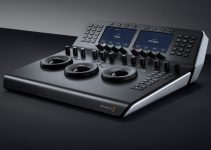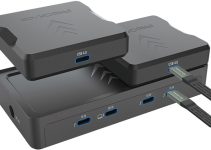September is here and as we get closer to Photokina leaks of new products are bound to happen. Over the weekend, popular rumor and leaks blog Nokishita posted a pdf containing supposedly the official full specifications for the upcoming Canon EOS R full-frame mirrorless camera that Canon have been trying to keep under wraps for some time, but these days there is nothing sacred anymore and “leaked” images and specs are often used as a marketing strategy in many industries. Now, I am not saying that this is the case here, it may or may not be, but regardless – the cat’s out of the bag.
Canon’s answer to the Nikon Z6 and Z7 full-frame mirrorless cameras is due to be announced tomorrow, September 5th according to numerous rumor sites including Nokishita and Canon Rumors. It was only a matter of time before Canon announced their official response to their arch-rival’s first full-frame mirrorless range.
As you have read and heard recently, I am sure, the first Canon full-frame mirrorless camera is to be called the Canon EOS R and feature a more compact body than the Canon 5D Mark IV or 1DX line as well as a new lens mount called the Canon RF mount. An EF-EOS R lens adapter will allow users to use their existing EF (and also EF-S) lenses on the EOS R.
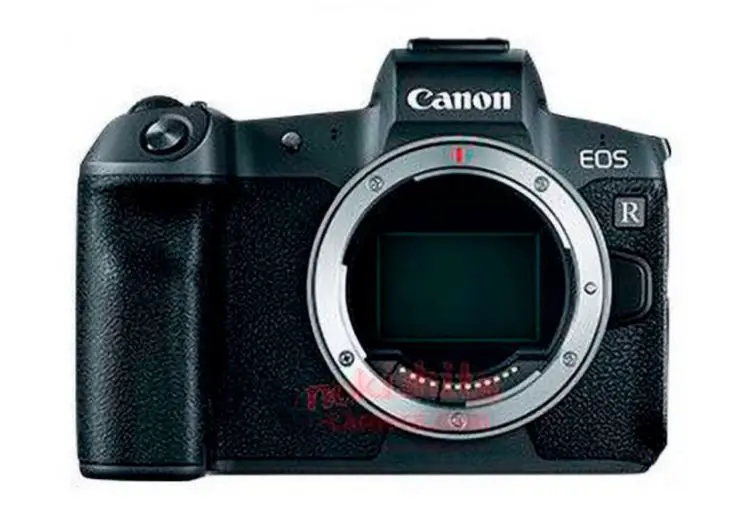
Image by Nokishita
At launch, Canon is expected to launch four lenses in the new RF range – the Canon RF 28-70mm f2L, Canon RF 24-105mm f4L IS USM, Canon RF 50mm f1.2L, and a Canon RF 35mm f1.8 IS STM Macro. See the specifications for these four RF lenses below.
Canon RF 24-105mm f/4L IS USM
- Lens construction: 14 groups 18 pieces
- Minimum focus distance: 45cm (17.71 inches)
- Filter diameter: 77mm
- Size: 83.5mm (3.28 inches) × 107.3mm (4.22 inches)
- Weight: 700g (1.54lbs)
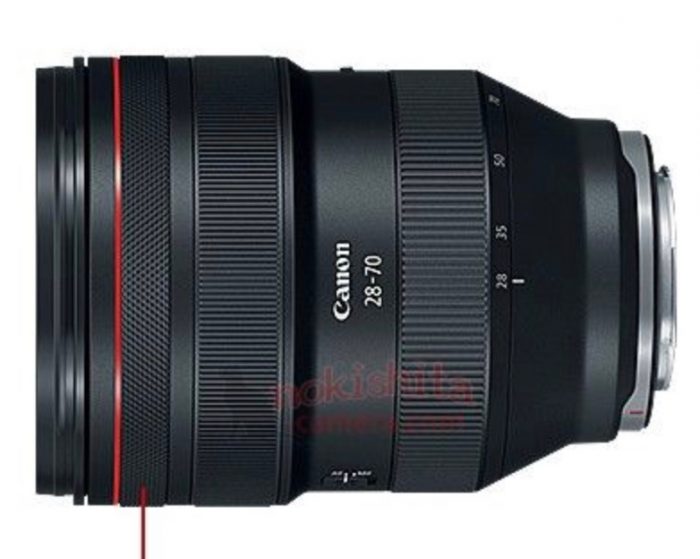
Images by Nokishita
Canon RF 28-70mm f/2L USM
- Lens composition: 13 groups 19 sheets
- Minimum focus distance: 39cm (15.35 inches)
- Filter diameter: 95mm
- Size: 103.8mm (4.08 inches) × 139.8mm (5.5 inches)
- Weight: 1430g (3.15lbs)
Canon RF 50mm f/1.2L USM
- Lens construction: 9 groups of 15
- Minimum focus distance: 40cm (15.74 inches)
- Filter diameter: 77mm
- Size: 89.8mm (3.53 inches) x 108.0mm (4.25 inches)
- Weight: 950g (2.09lbs)
Canon RF 35mm f/1.8 IS STM Macro
- Lens construction: 9 groups 9 pieces
- Minimum focus distance: 17cm (6.69 inches)
- Filter diameter: 52mm
- Size: 74.4mm (2.92 inches) × 62.8mm (2.47 inches)
- Weight: 305g (0.67lbs)
Back to the EOS R – from the leaked spec sheet it appears that the new camera will use a 30 megapixel CMOS sensor, which may or may not be some variation on the sensor used in the Canon 5D Mark IV, ISO up to 40,000 (expandable – 50 to 102,400) and also use SDXC/SDHC cards as media type in the form of a single SD card slot on the side of the camera, which will surely infuriate quite a few pro photographers working with dual card slots for safety.
Interestingly enough, Canon opted for SD cards rather than the more robust CFast 2.0 or even Compact Flash as on the 5D Mark IV. The camera will also feature a phase-detect Dual Pixel AF, which is no surprise. Autofocus performance in video is also expected to be superb and class-leading.
The EOS R will also have an OLED EVF, use the already available LP-E6N batteries from the 5D Mark IV, III etc., and feature a tilting LCD screen, which should be a huge deal with those looking forward to the EOS R for it’s video capabilities rather than stills.
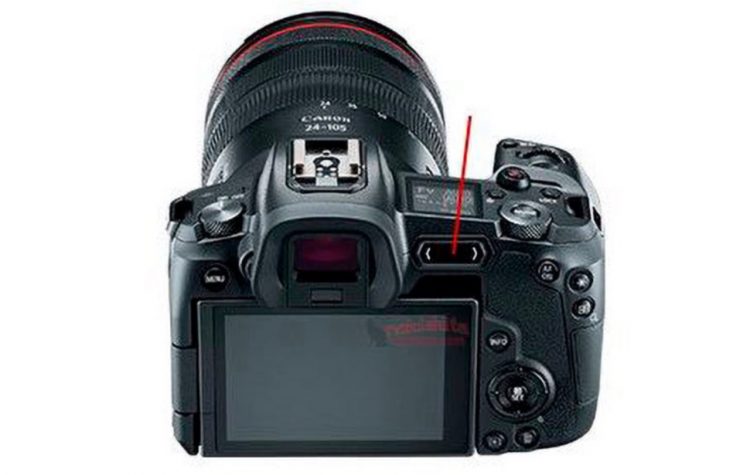
Images by Nokishita
Canon EOS R Video Specs
This is what many people have been wondering – how will it stack up against the competition? Not just from the upcoming Nikon Z cameras, but from established players such as the Sony A7 III and A9. Not to mention the yet-to-be-announced-but-you-know-it’s-coming Sony A7S III.
The Canon EOS R can shoot in 4K UHD up to 30p; and the lack of 4K/60p as well as true 4K DCI spec is quite disappointing.
Somewhat of a pleasant surprise is the MPEG-4 AVC video codec in an H.264 wrapper – no more MJPEG. Both ALL-I and IPB flavours and the codec is a variable bit rate with bit rates up to 480 Mbps or 3444 MB/min. No mention if it is 10bit or 8bit, nor indication of 4:2:0 or 4:2:2 colour sub-sampling. Presumably it is an 8 bit codec, but will have to wait and see for confirmation.
There is also no mention of C-Log or other dedicated flat picture profile, which is worrying to say the least. Slow-motion is up to 1080/60p and 720p/120 because apparently Canon think we are still in 2012 and such specs are somehow acceptable or competitive. Sure, those are only specs and nothing else at this point, but 1080p/60 is just no acceptable in 2018 from a $3000+ full-frame mirrorless camera.
I will reserve my “judgement” until after I have had my hands on the camera and done a review, if I ever get that chance, but just looking at the specs (and a lot of people do and base their purchasing decisions solely off such, which may not be the most intelligent thing to do but it’s the reality today).
Sure, Dual Pixel AF is going to be probably nothing short of amazing and clearly this is where Canon seems to be focused in the video department, but in 2018 it is not enough.
There is also no mention of In-Camera Stabilization (or IBIS), which will definitely be a deal breaker for most people. Just look at the Panasonic GH5S backlash not that long ago for reference. IBIS is a huge thing and lots of people who shoot weddings and other events, as well as vlog depend on it, so not including such feature is a huge missed opportunity in my opinion.
There is no info on the HDMI output in the specs (so far)…
Canon EOS R Video Specs Summary
- 30 Megapixels CMOS Full-Frame Sensor
- 4K (3840 x 2160) up to 30p
- Video Codec – MPEG4/AVC/H.264 – ALL-I or IPB
- Max bit rate up to 480 Mbps
- 1080p/60 / 720p/120
- Dual Pixel AF
- SD Card slot (single)
- Articulating back LCD touchscreen
- No In-Camera Stabilization
- No C-Log, No flat picture profile
- HDMI Out – Type C (HDMI Mini)
- LP-E6N battery
- Weight: 660g approx.
The price or availability are not yet known, however I expect the EOS R to be priced at around the $3000 mark or even higher. I expect the camera to start shipping before November.
For those of you, who want to delve deep into the full specs for the Canon EOS R, you can use this link to download the full specs PDF.
[via Canon Rumors/Nokishita]
Disclaimer: As an Amazon Associate partner and participant in B&H and Adorama Affiliate programmes, we earn a small comission from each purchase made through the affiliate links listed above at no additional cost to you.



